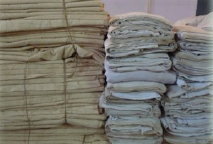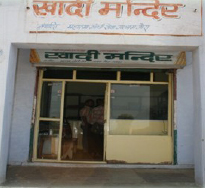Khadi has its origins back in Mahatma Gandhi ‘s era when he encouraged people not to buy foreign goods anymore. In addition, he encouraged people to believe in the swadeshi principle (that is to say encourage people to produce locally and within the family circle). In Hindi, khadi means “home-made fabric and/or garment”. It is also known as “khaddar”.

Before independence, people considered khadi as the fabric for political leaders and rural people . However, it is now widely spread among all categories of the population. The current situation is that there is more demand than supply. In the past, the khadi that was available was khadi cotton but it had a coarse texture and feel. However, now all different sorts of khadi are available and that makes it quite a fashionable fabric that is very much appreciated by the masses. […]
Its concept, as we said before, has mainly been developed by Mahatma Gandhi. It was primarily a means to develop an economic activity and to provide employment to the unemployed rural population of India. It was also a strong symbol during the fight for independence against British rule. A national importance, indeed, when you know that the Indian flag has to be made from khadi fabric. […]
Khadi is hand woven and hand spun , which takes time to be made. It is mainly manufactured in rural areas of India. It is no longer considered as the poor people’s fabric. It is a thriving industry and the Indian government has created village industries commissions to promote its usage.

Over the decades, khadi has moved from a freedom fighter’s identity to a fashion garment . It has gained world-wide appreciation as it is hand-made, durable and organic in nature. The fabric is produced by the masses for the masses . It makes a fashion statement and is also associated with gandhian philosophy, and that is why Ekta Parishad encourages and develops khadi production in rural India as a way for people to gain some livelihood resources . We can quote as an example one of the centres in Jaura, Chambal region (Morena District of Madhya Pradesh) where three different types of khadi are de-veloped. The centre has five shops in dif-ferent cities in this region: Gwalior, Morena, Sheopur, Joura and Goudar.
Source: Jan Satyagraha News – May 2010
Some articles on Ekta Parishad’s activity
Twelve years of women struggle supported by Ekta Parishad
Ekta Parishad’s short overview of the Indian rural and agricultural economy
Ekta Parishad is scaling up the poor people’s power for Land rights in India




